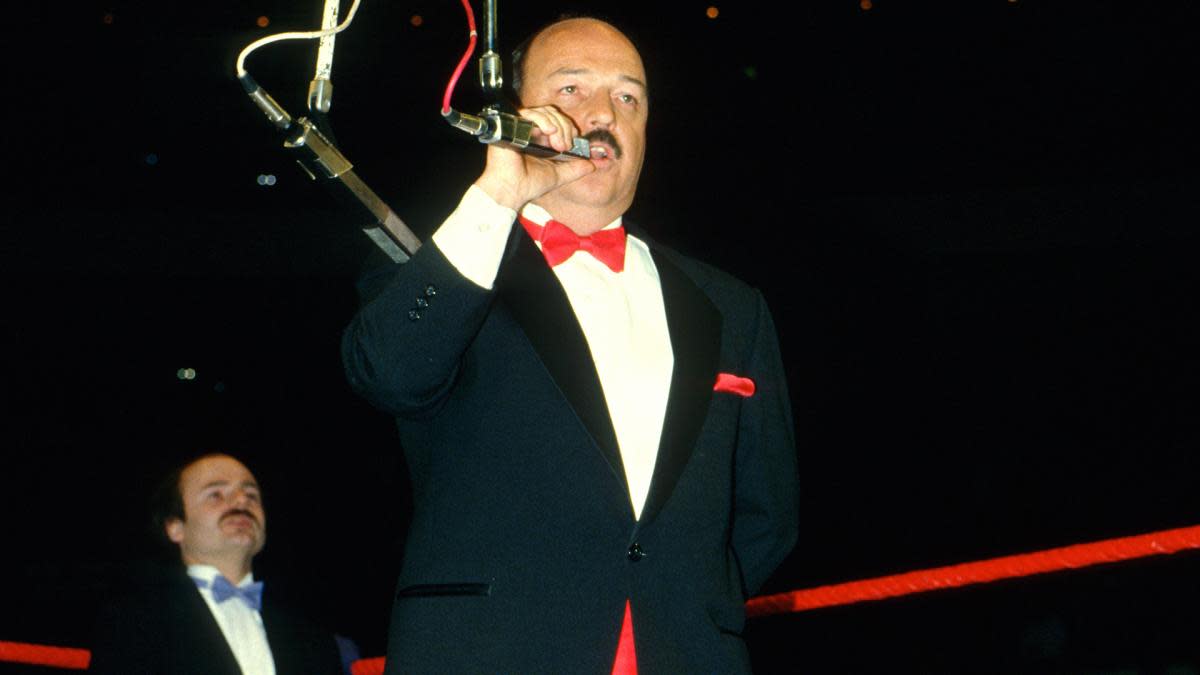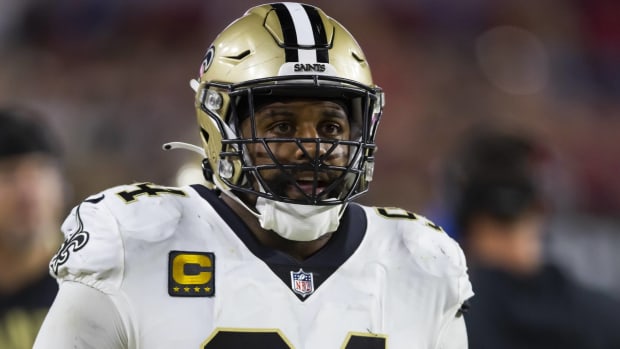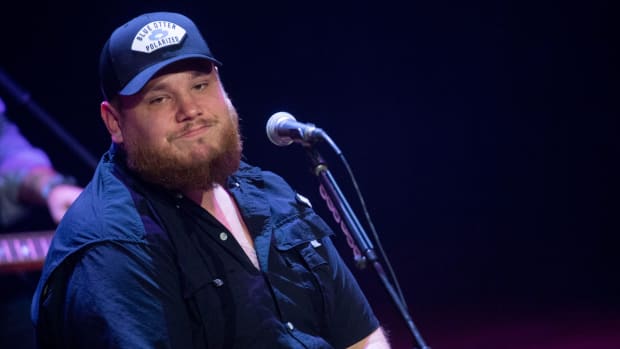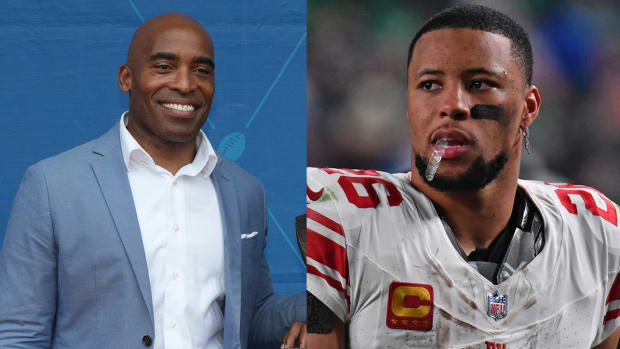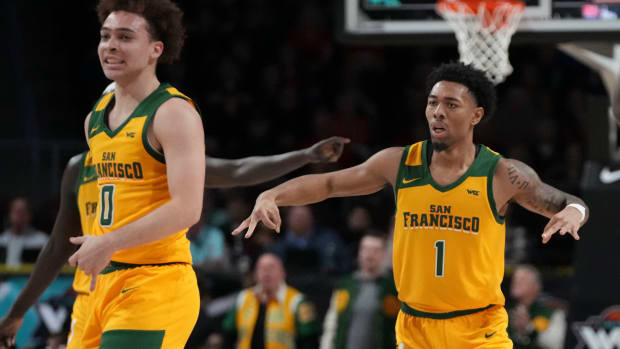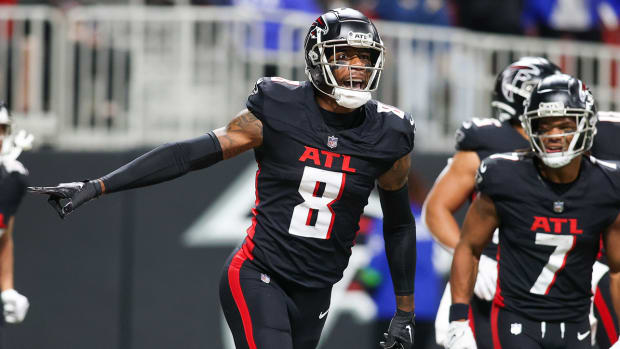‘Mean’ Gene Okerlund looks back on 46 years as the Vin Scully of pro wrestling
Give Jesse Ventura the credit for nicknaming Gene Okerlund.
“Jesse and I were talking on the air in Minneapolis with the AWA,” recalled Okerlund. “Jesse said something about once serving as the bodyguard for Tom Petty and the Heartbreakers, and I said, ‘Tom Petty, that’s a pretty big name.’ Jesse didn’t miss a beat and responded, ‘You don’t even know who Tom Petty is!’ I corrected him and said, ‘I certainly do, Jesse, he is the famous race car driver.’
“That’s when Jesse said, ‘That’s mean, Gene,’ and that is how the origin of ‘Mean Gene’ started.
“Mean” Gene Okerlund, the most single most influential and recognizable broadcaster in the history of professional wrestling, was originally hesitant to even enter the business when he was first hired by Verne Gagne’s American Wrestling Association in 1971.
“Verne Gagne syndicated a show called All Star Wrestling for the AWA,” said Okerlund. “The AWA was based out of Minneapolis, but Verne ran the market all the way from Chicago straight on west to San Francisco. That was a big territory, certainly geographically, and it was a very tough area to service, which is why television was so important for him. I had run into Verne at a TV station, where we first met, and then he called me when his regular guy had some sort of issue and couldn’t make a particular date.
Follow Extra Mustard on Facebook
Follow
“This was a live show at six o’clock, and Verne got ahold of me that day at 4pm. Instead of saying hello, he said, ‘Do you have a coat and tie?’ I said I did, and he said, ‘Could you do my wrestling show tonight? We don’t have an announcer.’ I backed off right there. ‘I know nothing about wrestling,’ I explained. ‘I don’t want to embarrass you and I certainly don’t want to embarrass myself.’ I was very dubious about getting involved, especially with the limited knowledge I had. Verne was very persuasive, and he talked me into it. We went on the air, and that was in April of 1971, and I’ve been involved in professional wrestling ever since.”
Okerlund, now 74, will celebrate his 46th anniversary in professional wrestling this April. He is a WWE Hall of Famer, but also played a key role in WCW, the AWA, and served as the unsung champion of Hulkamania. Okerlund stood at Hogan’s right-hand side in the AWA, WWE, and even WCW as fans across the world listened to Hogan bellow, “Well, you know, ‘Mean’ Gene.”
“I felt the chemistry with Hulk Hogan and the people, and that dated back to our time together in Minnesota,” said Okerlund. “It was instantaneous. He had a lot of magic and a lot of charisma, and the fans will tell you everything if you wait long enough, but this was instantaneous. He won people over in his first month with the territory after he made the circuit just one time, and he is arguably the biggest star ever in professional wrestling.”
Okerlund also shared instant chemistry with longtime friend—and on-air foe—Bobby “The Brain” Heenan.
“I just saw Bobby Heenan over the holidays, and he is someone who is very special in my life,” shared Okerlund. “Bobby is going through some tough times, but he has an unbelievably positive attitude. I don’t know if I could do what he has done. He’s a fighter and such a lovely man.”
Heenan and Okerlund first met in the AWA, and their friendship has lasted over four decades. Although Heenan has struggled with complications from lung cancer, including losing the ability to speak, Okerlund confirmed that “The Brain” remains as sharp as ever.
“Bobby was, without a doubt, the quickest mind I’ve ever worked with on the set,” said Okerlund. “Bobby is the Aaron Rodgers of managers in professional wrestling – Rodgers works magic on the professional football field, but Bobby Heenan did the same thing in a wrestling ring, in a television studio, on a radio program, and he could do the same thing in a newspaper layout. He was a great communicator, and he knew how to generate heat with fans. People loved to hate Bobby Heenan.”
• Eric Bischoff on Bobby Heenan’s WCW legacy
Contrary to Heenan’s bold, antagonistic, and verbose style of commentary, Okerlund rose to prominence by never deviating from the script. He treated the business of professional wrestling as seriously as Vin Scully called Major League Baseball, and the style was largely appreciated by wrestlers and audiences worldwide.
“I finished high school and studied at the University of Nebraska in the school of journalism, which really turned me onto journalism,” said Okerlund, who grew up in South Dakota and was born and raised on an Indian reservation. “I never finished, but the very little that I did learn in two-and-a-half-years prepared me for a career in legitimate journalism, which included WWE, AWA, WCW, and everything in-between.”
Okerlund revealed his preparation for interviews, which was always designed to highlight the talent through genuine interaction.
“My theory for a good interview is to listen to a person and react,” explained Okerlund. “I would always ask a question that was pertinent to the mindset of the talent, whether it was who they were going to meet, where they were going to meet them, and what they were going to do. That was my preparation, but I knew I needed to listen and interact with the talent, then I could take it from there.”
The jump from the AWA to Vince McMahon’s World Wrestling Federation forced Okerlund to quickly evolve from a wrestling broadcaster into a plethora of roles under Vince McMahon, including singing for the new wrestling album, hosting McMahon’s attempt at late-night on a show called Tuesday Night Titans, and, yes, occasionally interviewing pro wrestlers.
“There was a lot of experimenting going on in the mid-80s,” admitted Okerlund. “The landscape and the formula of wrestling, after going mainstream with people like Cyndi Lauper and Dick Ebersol from NBC, became something totally different. This wasn’t old school—it was a new wave and it presented a lot of different opportunities for all of the talents. Guys like Roddy Piper, Hillbilly Jim, or whoever it happened to be, they were singing and doing things they would never have done in their previous life in wrestling.”
Despite the absurdity that often appears in the midst of a wrestling promotion, Okerlund refused to break character on-air. He never allowed personal feelings to interfere with a storyline, nor did he ever stray from the story, which is how he preferred to develop his persona in wrestling.
“That was how I approached the job,” stated Okerlund. “It’s something that I thought would play well. You cannot be laughing at the product. You need to go along with the storyline, and put it over. That is my job.
“Vince never really told me anything from day one. Ten years later, he told me some things, but initially, it was, ‘Gene, here’s what we expect you to do,’ and we started with specific market interviews then went for big syndicated shows.”
Okerlund interviewed every major star in wrestling from the 1970s to the 2000s, from Bruno Sammartino to “The Heartbreak Kid” Shawn Michaels.
“I had a tougher time with some guys than I did with others, but the Ultimate Warrior interviews still stand on their own,” noted Okerlund. “He was a very tough man to understand, and when he started on the ‘moons and the stars’ and all of that other garbage, I’m sure that the audience missed it, but they liked the way he pulled the ropes and worked with that fantastic body. As for Andre the Giant, he really didn’t have to say too much. He would mumble, he would have a cocktail or two and could be a little off the beaten path, but he got his message across. He was a good man.”
Okerlund also shared chemistry with Randy “Macho Man” Savage, who incorporated props, like newspapers and coffee creamers, into their early interviews together in the WWF.
“Randy was so good,” said Okerlund. “He wanted to do something different, and we’d have no idea where we were going to go with a particular interview. He liked that unpredictability. We’d center the interview around whomever Randy Savage was meeting in the ring, whether it was Ricky Steamboat or Hulk Hogan, but the content itself was improvised and done on the spot. Randy was very good at that, and he loved those props.”
Okerlund was asked if any particular event from the past five decades of wrestling had genuinely surprised him, and there were two which immediately came to mind.
“Outside of the business itself, the biggest surprise may have been Jesse Ventura elected as governor of Minnesota,” said Okerlund. “There were some things that happened in the business that surprised me a lot, but no one knew quite what was going to happen in 1985 at WrestleMania. It was public knowledge that, if the thing was a bust, then the company would go down the sewer. But it wasn’t a bust, it was a bonafide hit with Muhammed Ali, Liberace, the Radio City Rockettes, and Billy Martin. God, I had fun with Billy Martin. It was tough to get him straight enough to do an interview, but we made it work.”
Okerlund conducted an interview with Liberace, once the highest paid entertainer in the world, at his lavish home in 1985 at Trump Tower.
“I originally interviewed Liberace in his penthouse at Trump Tower,” recalled Okerlund with pinpoint clarity. “I was there with Liberace, and my wife also came in, and she ran into [famous actor] Yul Brynner, who was doing his final tour with ‘The King and I’ on Broadway.”
Okerlund enjoyed a celebrated run in the WWF until 1993, when he moved south to Ted Turner’s WCW in 1993 and returned to a familiar spot interviewing the likes of Hogan, Savage, and Ric Flair.
“Ric and I would drink Dirty Ketel One Martinis, but I’d never try to out-drink Ric,” Okerlund said with a laugh. “I was too smart to try that, but my move to WCW helped a lot. Now I went over there first, all alone, and brought guys like Bobby Heenan with me shortly thereafter. I came in late 1993, and Bobby Heenan started in the first part of 1994. Then the coffers opened from Ted Turner, and the list of talent kept growing bigger and bigger and bigger. Then, finally, Kevin Nash and Scott Hall came in and formed the NWO with Hogan. Virtually all of the top stars went over there, and that was a storyline that had legs for a couple of years.”
While there were many parts of the job Okerlund relished—the news reports from the studio, he noted, were particularly enjoyable segments—he also confirmed that the part of the job he disdained was the incessant travel.
“I did not enjoy traveling 300 days a year for six years,” said Okerlund. “Commercial travel is not easy, but other than that, I really enjoyed every minute of it. I was just in New York last month working up in the studio at Stamford, and it was like the old days.”
Okerlund is keeping active with current projects, and he is especially busy during WrestleMania season.
“I’m going to be at WrestleCon during WrestleMania weekend,” said Okerlund. “I’ll be at the AXXESS fanfare for WWE, and, of course, I’m going to be at the WWE Hall of Fame, which this year is on Friday night. Then I’ll head to the Citrus Bowl on Sunday for WrestleMania 33. I’ll also make appearances in Pittsburgh, New Jersey, New York, and I’m going to be up in Niagara Falls for a fan fest, which allows me to keep busy and interact with the people.”
Okerlund’s professionalism, talent behind the microphone, and ability to bring the best out of talent helped him achieve a rarefied place in wrestling history where no other broadcaster currently resides.
“I have a tremendous amount of gratitude to those who enjoyed my work,” said Okerlund. “It’s something we did together, because I must have given them something they liked, and we shared it, and everybody walked away a winner. That’s truly the way I look at my time with the business.”
Justin Barrasso can be reached at JBarrasso@gmail.com. Follow him on Twitter @JustinBarrasso.
